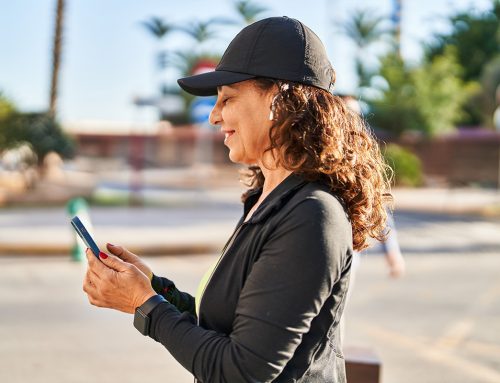Experiencing high blood sugar—also known as hyperglycemia—can feel overwhelming. But don’t worry, identifying the symptoms is the first step toward managing it. If your blood sugar is high, you might notice:
- Frequent urination
- Extreme thirst
- Excessive fatigue
- Blurred vision
- Frequent headaches
- Sugar cravings
High blood sugar levels are often influenced by a variety of factors, not just diet. Stress, fatigue, illness, and certain medications can all contribute to spikes. For example, forgetting to take prescribed medications, reduced physical activity, consuming highly processed foods, or getting poor-quality sleep can all cause blood sugar to rise.
The goal of effective blood sugar management is to minimize fluctuations and maintain stable levels throughout the day. By following a few key steps, you can gain better control and get back on track.
1. Stay Hydrated
Did you know that one of the first treatments doctors provide in the hospital for high blood sugar is rehydration? It’s incredible what staying hydrated can do for your body. Drinking plenty of water is essential for keeping both blood sugar and electrolyte levels in balance. Proper hydration supports your body’s ability to process glucose efficiently by maintaining blood volume and pressure, as well as supporting kidney function. Water also acts as a natural appetite suppressant, which can aid in weight management (2).
On the flip side, not drinking enough water can increase your risk of elevated blood glucose levels.
Your recommended daily water intake depends on several factors, including age, gender, activity level, medical conditions, and even the weather. However, as a general guideline, the Institute of Medicine suggests the following:
- Men should aim for about 112 ounces (around 14 cups) of water daily.
- Women should aim for about 78 ounces (around 10 cups) of water daily.
“A thirst for water can only be satisfied by drinking water”
2. Move
The human body is designed to move. Did you know that something as simple as a 10-minute walk can help lower your blood sugar levels? Walking after a meal has a greater impact on glucose levels than walking before a meal. In fact, exercising shortly after eating—before your blood sugar peaks—is the most effective time to incorporate movement to help manage blood sugar. If you can’t get out for a walk immediately after eating, find creative ways to move. Try incorporating movement into your day with simple activities: do calf raises at your desk, walk to the furthest drinking fountain, discuss a project with a colleague across the office, pick up the mail, take the dog for a walk, or find a reason to go up and down the stairs a few times (1).

3. De-stress
Managing stress is important for keeping your blood sugar levels steady. When you’re stressed, your body releases hormones like cortisol and adrenaline, which can cause your glucose levels to rise (3). Over time, chronic stress can lead to habits like mindless scrolling, stress eating, and lounging on the couch—behaviors that interfere with blood sugar control. But don’t worry! There are plenty of enjoyable ways to manage stress, like practicing mindfulness meditation, doing deep breathing exercises, trying yoga, or simply engaging in hobbies you love. Reducing stress not only helps prevent blood sugar spikes but also supports your body’s ability to use insulin more effectively—making it easier to keep your blood sugar in check.
Dangerously High Blood Sugar
Remember, if you’re uncertain about your symptoms, it’s better to be safe than sorry. We recommend seeing your healthcare provider. Some symptoms that warrant immediate medical attention include:
- Very high blood sugar level (over 600 mg/dL)
- Mental changes such as confusion, delirium, or hallucinations
- Loss of consciousness
- Confusion
- Dry mouth and extreme thirst
- Frequent urination
- Blurred or loss of vision
- Weakness or paralysis, especially if it affects one side of the body
These may be signs of Hyperosmolar Hyperglycemic State (HHS) (4). HHS is a serious complication of diabetes that occurs when blood sugar levels remain very high over a prolonged period. This leads to severe dehydration and, in many cases, reduced alertness or consciousness. It is a medical emergency and requires immediate treatment (5).
Persistent hyperglycemia (high blood sugar) that doesn’t improve may also indicate Diabetic Ketoacidosis (DKA). While DKA is more common in people with type 1 diabetes, it can also occur in those with type 2—typically following severe illness or infection, uncontrolled blood sugars, missed or inadequate insulin doses (if prescribed), certain medications, or, in rare cases, prolonged fasting or very low-carb diets.
DKA is a serious complication that happens when there isn’t enough insulin to allow glucose to enter your cells. In response, the liver breaks down fat for fuel. While “fat-burning” might sound like a good thing, in this case, the body can’t use glucose at all. This process produces acids called ketones, which accumulate in the blood and urine. When ketone levels become too high, the blood turns acidic, creating a dangerous and potentially life-threatening situation.
To check your ketone levels, use an over-the-counter urine ketone test kit or a specific ketone meter. If your ketone levels are moderate or high, contact your doctor immediately. If you can’t reach them, call 911 or go to the nearest emergency room or urgent care.
Remember, if your blood sugar levels are consistently above 300 mg/dL and not coming down, you should check for ketones in your urine.
If you have ketones in your urine along with symptoms, do NOT exercise to lower your blood sugar. Exercising in this state can actually cause your blood sugar to rise even further.
Instead, focus on staying well-hydrated and ensure you’ve taken your medications as prescribed.
Sending Health Your Way!
The Tula Clinical Team
Austin MS, RDN, CSR, LDN, CD
Aubree RN, BSN
Tula Takeaways |
|---|
| 1. Thirst in Disguise: Do mid-afternoon sugar cravings sound familiar? Oftentimes, these cravings are just thirst in disguise! Your brain receives similar signals for both hunger and thirst, and sometimes thirst is misinterpreted as a hunger pang. Try drinking a large glass of water and wait 15–20 minutes before reassessing your craving. You may find you can skip that snack—it was just dehydration. |
| 2. Try Tracking It: Whether it’s tracking how much water you drink throughout the day or logging your workouts twice a week, tracking is a great way to keep yourself accountable and build healthy habits. |
| 3. Stay Safe: Consider sharing this blog with your family and friends so they can recognize the symptoms of high blood sugar too. Ultimately, blood sugar control is the individual’s responsibility—but a well-informed support system can make all the difference. |
The LIVE TULA blog is informational and not medical advice. Always consult your doctor for health concerns. LIVE TULA doesn’t endorse specific tests, products, or procedures. Use the information at your own risk and check the last update date. Consult your healthcare provider for personalized advice.






